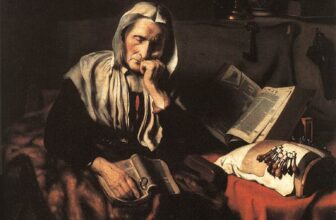
The Enigma of the Bayeux Tapestry: Unraveling a Medieval Mystery
In the quiet town of Bayeux in Normandy, France, hangs one of the most remarkable treasures of medieval Europe: the Bayeux Tapestry. A silent yet eloquent storyteller, this nearly 70-meter-long embroidered linen cloth has mesmerized historians, artists, and the public for centuries. It depicts the events leading up to the Norman conquest of England in 1066 and culminates in the dramatic Battle of Hastings, a turning point in European history. Yet despite its fame, the Bayeux Tapestry is wrapped in layers of mystery, controversy, and unanswered questions.
Why does it end so abruptly? What happened to its missing pieces? Why has its authorship and ownership been so fiercely debated? And how did a possible fragment end up in Germany? This is the story of the Bayeux Tapestry, not just of what it shows, but of what it conceals.
A Medieval Masterpiece
The Bayeux Tapestry, technically not a tapestry but an embroidery, is a visual chronicle stitched with colorful wool threads onto linen. Its panels portray a vivid narrative of the events leading to the Norman invasion of England by Duke William of Normandy, culminating in the death of King Harold at the Battle of Hastings in 1066. The figures, nearly 600 humans, 200 horses, and countless other animals, are stylized and expressive, moving across the fabric like a medieval film strip.
Commissioned in the late 11th century, the tapestry is traditionally believed to have been ordered by Bishop Odo of Bayeux, William’s half-brother, to decorate the newly completed Bayeux Cathedral. This origin theory adds prestige to the piece and ties it to the Norman elite. However, like so much else about the tapestry, the true identity of its creators and patrons remains elusive.
The Missing Pieces: A Tale Left Incomplete
One of the enduring enigmas surrounding the Bayeux Tapestry is its abrupt ending. The final surviving scene shows English forces fleeing the battlefield and bodies strewn across the ground. Yet, no closure is offered. William is not formally crowned king, nor is there any depiction of his consolidation of power.
Most scholars believe the tapestry originally extended beyond what survives today, perhaps by several feet. It may have included William’s coronation on Christmas Day 1066 at Westminster Abbey or scenes showing the transition of power in England. The fact that such monumental events are omitted strongly suggests that a portion has been lost over the centuries.
How and when did this happen? Was it deliberate censorship or accidental damage?
Theories and Speculation
Some theories propose that the missing end was removed or destroyed during religious or political upheavals. During the French Revolution, for example, the tapestry was nearly used as a wagon cover before being saved by a local lawyer. Others argue that ecclesiastical authorities may have removed sections they considered politically or religiously sensitive.
Alternatively, the ending may never have been completed at all. Some scholars theorize that the tapestry was hurriedly created to commemorate the 10th anniversary of the conquest in 1076 and was unfinished when displayed.
There is also tantalizing speculation that missing panels may have been deliberately separated, sold, or stolen. But with no surviving documentation, the truth remains hidden in the folds of time.
A Fragment Found in Germany?
In 1871, during the Franco-Prussian War, German soldiers occupying parts of France were reported to have looted numerous artifacts. Fast forward to the 20th century, and rumors began to circulate about a mysterious textile fragment discovered in a German private collection. This piece, embroidered in a style remarkably similar to the Bayeux Tapestry, depicted Norman ships and figures in a layout that seemed to fit with missing scenes.
Was this truly a fragment of the lost ending?
Although the artifact has intrigued historians, its provenance has never been confirmed. Skeptics argue it may be a 19th-century imitation, created during a period when medieval revivalism was fashionable in Europe. Others hold out hope that it’s a genuine piece of the original, evidence that more of the tapestry survives than previously believed.
So far, no definitive authentication has taken place. The alleged fragment remains a curiosity, hinting at the possibility of more hidden parts of this medieval epic still waiting to be discovered.
The Controversies: More Than Just Missing Threads
Beyond the mystery of its missing panels, the Bayeux Tapestry has sparked numerous controversies over the years. One major debate centers on the question: Is it Norman or English?
Although long considered a Norman creation, many historians now argue that the embroidery was likely produced in England, perhaps in Canterbury, by Anglo-Saxon artisans. This theory is supported by the style of needlework, known as opus anglicanum, and the Latin inscriptions using conventions common in Anglo-Saxon England.
If true, the tapestry would be a rare case of the conquered commemorating their own defeat, perhaps under duress, but with remarkable artistry and narrative flair. Such a revelation transforms the tapestry from a mere propaganda piece into a symbol of cultural resilience.
Another controversy surrounds its depiction of historical events. While the tapestry provides an invaluable visual account of 11th-century life, warfare, and politics, it is far from objective. As with all narratives commissioned by the powerful, it may reflect a particular version of the truth, one that favors the Normans and portrays Harold’s oath-breaking and death in a manner that justifies William’s conquest.
This raises broader questions about historical memory and propaganda. Was the tapestry a sophisticated tool to legitimize William’s rule, or a more nuanced record of a tumultuous period in European history?
Who Owns the Bayeux Tapestry?
For centuries, the tapestry resided in Bayeux, housed first in the cathedral and later in the town’s dedicated museum. Its survival is nothing short of miraculous, considering the wars, revolutions, and neglect it has endured.
But who really owns it?
Legally, the tapestry is the property of the French state. It is curated by the Bayeux Museum and is a designated national treasure. However, its historical and cultural significance extends far beyond national borders.
Calls have occasionally been made for the tapestry to be loaned to Britain. In 2018, French President Emmanuel Macron agreed in principle to allow the tapestry to be exhibited in the UK for the first time in 950 years, though logistical and conservation concerns have delayed the plan. For many in the UK, hosting the tapestry would be an opportunity to reconnect with a shared medieval past.
Still, the issue is politically sensitive. Some French officials and scholars oppose the loan, citing risks to the fragile artifact and concerns about national heritage. The tapestry, after all, is not just a medieval relic, it is a symbol of French cultural identity.
Where is the Bayeux Tapestry Today?
Today, the Bayeux Tapestry is housed in the Musée de la Tapisserie de Bayeux in Normandy. Displayed in a specially controlled environment to protect it from light and humidity, the tapestry continues to draw hundreds of thousands of visitors each year.
Plans are underway to renovate and expand the museum by 2026, with the goal of enhancing conservation efforts and improving the visitor experience. The tapestry will remain in Bayeux during this time, though some replicas and digital presentations may travel.
In addition to the original, several high-quality replicas exist around the world, including in Reading, UK, and the United States, helping to make its story accessible to a broader audience.
The Tapestry’s Legacy
Despite being almost a thousand years old, the Bayeux Tapestry remains strikingly relevant. Its blend of history, art, and narrative continues to inspire scholars, writers, and filmmakers. It has influenced everything from medieval studies to modern graphic novels and television, including clear echoes in epic scenes from series like Game of Thrones.
But perhaps its most enduring legacy lies in its unanswered questions.
The missing pieces, the debated authorship, the disputed interpretations, these mysteries ensure that the Bayeux Tapestry remains more than a static artifact. It is a living enigma, a medieval story still being told and retold, each new generation adding its own interpretations and theories.
It invites us not only to marvel at the craftsmanship of the past but to engage with history as a dynamic, evolving dialogue.
Stitching Together the Truth
The Bayeux Tapestry is often described as the first great narrative artwork of the medieval West. But it is also a puzzle. Its incomplete ending, mysterious origins, and debated ownership make it as much a subject of inquiry as of admiration.
Was a piece truly lost, or taken? Could part of it really have surfaced in Germany? Was it created to glorify Norman conquest or to lament a nation’s fall? And will we ever recover the missing end?
Like all great works of art, the tapestry offers more questions than answers. And perhaps that is its greatest strength. In its vivid threads, it captures not just a battle but the complexity of history, woven with human ambition, memory, and myth.
And so, the Bayeux Tapestry continues to hold us in its intricate spell, as compelling today as it was nearly a millennium ago. image/wikimedia




